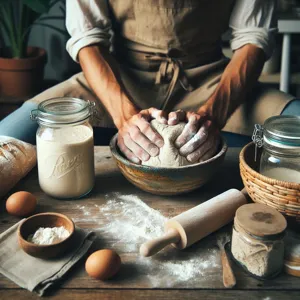Dealing with car insurance claims can often feel like traversing a complex maze, filled with unexpected twists and turns that can leave even the most seasoned drivers feeling overwhelmed.
Whether you’ve been in a minor fender bender or a more serious accident, understanding how to navigate the claims process is essential to ensuring you receive the compensation you deserve. In this comprehensive guide, we will break down each step of the claims process, demystifying the jargon and providing practical tips to empower you as you advocate for your rights. From documenting the scene of the accident to communicating effectively with your insurance adjuster, we’ll equip you with the knowledge and confidence needed to steer through the complexities of car insurance claims with ease. So buckle up and get ready to take control of your experience—your roadmap to successful claims handling starts here!
1. Understanding Car Insurance Basics

Navigating the world of car insurance can often feel overwhelming, especially in the aftermath of an accident or vehicle damage. To effectively handle your car insurance claims, it’s essential to start with a solid understanding of the basics. Car insurance is more than just a legal requirement; it’s a financial safety net that protects you from the unexpected costs associated with accidents, theft, or damage to your vehicle.
At its core, car insurance is typically broken down into several types of coverage: liability, collision, and comprehensive. Liability insurance is mandatory in most states and covers damages to other people’s property and medical expenses if you’re at fault in an accident. Collision coverage, on the other hand, helps pay for repairs to your own vehicle after an accident, regardless of who is at fault. Lastly, comprehensive insurance covers non-collision-related incidents, such as theft, vandalism, or natural disasters.
Understanding your policy is crucial. Familiarize yourself with your coverage limits, deductibles, and any exclusions that may apply. For instance, if you have a high deductible, you’ll be responsible for a larger portion of the repair costs before your insurance kicks in. This knowledge not only empowers you in the event of a claim but also helps you make informed decisions when adjusting your coverage or shopping for new policies.
Additionally, keep in mind that insurance terms can be confusing; jargon like “premium,” “underwriting,” and “subrogation” might seem daunting at first. However, taking the time to decode these terms will make it easier to communicate effectively with your insurance agent and advocate for yourself during the claims process.
In summary, a solid grasp of car insurance basics will serve as a foundation for successfully navigating your claims. By understanding the different types of coverage, knowing your policy details, and familiarizing yourself with insurance terminology, you’ll be better equipped to tackle any challenges that arise, ensuring that you can get back on the road as quickly and smoothly as possible.
2. When to File a Claim: Key Scenarios
Understanding when to file a car insurance claim is crucial for navigating the often convoluted claims process effectively. Not every bump or scrape warrants a claim, and knowing the right scenarios can save you time, money, and potential headaches down the road. Here are some key situations where filing a claim is advisable:
**Accidents Involving Other Parties**: If you find yourself in a collision with another vehicle, it’s essential to consider filing a claim, especially if there are injuries or significant damages involved. Documenting the accident with photos, witness statements, and police reports creates a solid foundation for your claim, ensuring that you have the necessary evidence to support your case.
**Severe Weather Damage**: Mother Nature can be unpredictable, and if your vehicle sustains damage from a hailstorm, flooding, or a fallen tree, it’s time to reach out to your insurance provider. Comprehensive coverage typically handles these incidents, helping you recover costs for repairs or even a total loss.
**Theft or Vandalism**: If your vehicle is stolen or damaged due to vandalism, reporting the incident to your insurance company promptly is essential. This not only aids in the recovery of your vehicle but also ensures you get compensation for the loss or damage, provided you have the appropriate coverage.
**Significant Repair Costs**: If the cost of repairs exceeds your deductible, filing a claim makes financial sense. This is particularly important in situations involving substantial mechanical failures or accidents where repair costs can quickly escalate.
**Injuries to Yourself or Passengers**: If anyone involved in the incident suffers injuries, filing a claim is not just a matter of vehicle damage. Medical expenses can accumulate rapidly, and having insurance to cover these costs can alleviate financial strain.
In each of these scenarios, prompt action is key. Document the circumstances surrounding the incident, gather necessary evidence, and contact your insurance provider as soon as possible. Understanding when to file a claim can help streamline the process and ensure you receive the compensation you deserve, allowing you to navigate the maze of car insurance claims with confidence.
3. Immediate Steps After an Accident

Experiencing an accident can be overwhelming, and knowing what to do in the immediate moments that follow is crucial for a smooth claims process later on. First and foremost, ensure your safety and the safety of others involved. If anyone is injured, call emergency services immediately. Once you’ve addressed any medical needs, it’s time to gather essential information at the scene.
Start by exchanging details with the other drivers involved; this includes names, contact information, insurance policy numbers, and vehicle details. Capturing the scene with photos can be immensely helpful. Take pictures from various angles, focusing on any damage sustained by all vehicles, the surrounding environment, and any relevant traffic signs or signals. These images may prove vital for your insurance claim later.
Next, document the specifics of the accident. Write down the time, date, and location of the incident, as well as any weather conditions that may have influenced the situation. If there are witnesses, kindly ask for their contact information as well, as their accounts could support your version of events.
Finally, avoid discussing fault at the scene. While you may feel compelled to apologize or explain your actions, keep in mind that these statements could be interpreted as admissions of liability. Focus on the facts, and let your insurance provider handle the intricacies of fault determination. By taking these immediate steps, you’ll have a solid foundation to navigate the claims process with confidence and clarity.
4. Gathering Necessary Information and Evidence
When it comes to filing a car insurance claim, gathering necessary information and evidence is a crucial step that can significantly influence the outcome of your claim. This process not only helps substantiate your case but also ensures that all the details are documented correctly, which can expedite the claims process.
Start by collecting basic information from all parties involved in the incident. This includes names, contact information, and insurance details of the other driver(s). If there were any witnesses to the accident, be sure to note their names and contact information as well. Having multiple perspectives can strengthen your claim and provide additional context to the insurance adjuster.
Next, take comprehensive photographs of the accident scene. Capture images of the vehicles involved, any visible damages, and the surrounding environment. This visual evidence can be invaluable in demonstrating the circumstances of the accident. Make sure to photograph license plates, street signs, and any other relevant details that could help illustrate the scene.
Don’t forget to document any injuries sustained during the incident. Take photos of visible injuries and keep records of medical visits, treatment plans, and any related expenses. This information is vital for claims related to personal injury and can help establish a clearer picture of the accident’s impact on your life.
Additionally, gather any police reports or incident reports that were filed. If law enforcement was called to the scene, they would typically create a report that outlines the particulars of the incident, which can serve as an official account of what transpired. This document can be a critical piece of evidence for your insurance claim.
Lastly, compile any communication you’ve had with your insurer or the other party’s insurance company. Keeping a record of phone calls, emails, and letters will help you track the progress of your claim and provide clarity in case of any disputes.
By meticulously gathering all necessary information and evidence, you fortify your claim and pave the way for a smoother, more efficient process. Remember, being organized and thorough not only aids your case but also alleviates some of the stress that comes with navigating the complexities of car insurance claims.
5. Contacting Your Insurance Company

Once you’ve gathered all the necessary information from the accident scene, it’s time to reach out to your insurance company. This step is crucial as it sets the tone for the entire claims process. Start by locating your policy documents, which will provide you with your policy number and the contact information for claims reporting. Many insurance companies now offer 24/7 claims support, allowing you to file a claim at any time, which can be a relief during stressful situations.
When you contact your insurer, be prepared to provide a clear and concise account of the incident. Have the details you collected handy—such as the date, time, location of the accident, and any other relevant information. If there were witnesses or police reports, mention these as they can significantly bolster your claim.
It’s also important to ask questions during this initial call. Inquire about the next steps in the claims process, what documentation is needed, and how long the process typically takes. This is your chance to clarify any uncertainties you might have about your coverage or the claims procedure.
Be sure to take notes during the conversation, including the name of the representative you spoke with, as well as any claim reference number provided. This documentation will be invaluable if you need to follow up or escalate your claim later on.
Remember, your insurance company is there to assist you, so don’t hesitate to express any concerns or seek clarification on anything you don’t understand. The clearer you are about your situation, the smoother the claims process will be as you navigate this challenging maze.
6. Understanding Your Policy: Coverage and Limits
Navigating the intricacies of your car insurance policy is crucial when it comes to handling claims effectively. Understanding your coverage and limits is not just a matter of knowing what is included; it’s about grasping the full scope of your financial protection and how it applies in various scenarios.
Start by carefully reviewing your policy documents. These documents outline the specific coverage types you have—such as liability, collision, comprehensive, medical payments, and uninsured/underinsured motorist coverage. Each type serves a different purpose, and knowing which one applies to your situation can save you time and frustration during the claims process. For instance, if you find yourself in an accident with an uninsured driver, knowing you have uninsured motorist coverage can provide peace of mind and clarity on how to proceed.
Next, pay close attention to your coverage limits. These are the maximum amounts your insurance company will pay in the event of a claim. Understanding your limits helps set realistic expectations for what will be covered. For example, if you have a liability limit of $50,000 for bodily injury per person, you need to be aware that any medical expenses exceeding that amount will need to be covered out-of-pocket.
Additionally, familiarize yourself with deductibles—this is the amount you must pay before your insurance kicks in. If your deductible is set at $1,000 and you have a collision that results in $3,000 worth of damage, you’ll need to pay the first $1,000, and your insurance will cover the remaining $2,000. This knowledge can dramatically influence your decision-making when considering whether to file a claim for minor damages.
Lastly, don’t hesitate to reach out to your insurance agent for clarification. They can help demystify complex terms and ensure you fully understand your policy. Being informed about your coverage and limits not only prepares you for potential claims but also empowers you to make better decisions regarding your insurance needs in the future. With a comprehensive understanding of your policy, you’ll be well-equipped to navigate the maze of car insurance claims with confidence.
7. Filing the Claim: Step-by-Step Process

Filing a car insurance claim can often feel overwhelming, but breaking the process down into manageable steps can help simplify what might initially seem like a daunting task. Here’s a step-by-step guide to ensure you navigate this maze with confidence and clarity.
**Step 1: Gather Necessary Information**
Before you file your claim, make sure you have all the essential information at hand. This includes your insurance policy number, details of the other party involved, accident reports, photos of the incident, and any witness statements. Having this documentation ready will streamline the process and help your insurance adjuster understand your case better.
**Step 2: Report the Incident**
Contact your insurance company as soon as possible to report the incident. Most insurers have a dedicated claims hotline that operates 24/7. Be prepared to provide a detailed account of what happened, including the date, time, location, and circumstances of the accident. Clarity and accuracy are key, so take your time to ensure all the details are correct.
**Step 3: Fill Out the Claim Form**
Once your insurer has all the initial information, they will provide you with a claim form to fill out. This form will require you to provide specific details about the accident, the involved vehicles, and any damages. Take your time with this form—any mistakes or omissions can delay your claim. Double-check your answers and include all necessary documentation to support your claim.
**Step 4: Submit Your Claim**
After completing the claim form, submit it along with all required documentation to your insurance company. Most insurers allow you to submit claims online, via email, or through a mobile app, making this process quicker and more convenient. If you choose to submit a paper claim, consider sending it via certified mail to ensure it’s received.
**Step 5: Follow Up**
Now that your claim is submitted, it’s important to stay engaged with your insurance company. Follow up regularly to check the status of your claim, and don’t hesitate to reach out if you have questions or need updates. Keeping the lines of communication open will help ensure your claim is processed in a timely manner.
**Step 6: Review the Settlement Offer**
Once your claim is processed, your insurance adjuster will present you with a settlement offer. Review this offer carefully and consider whether it adequately covers your damages and expenses. If you feel the offer is insufficient, you have the right to negotiate or appeal the decision. Present any additional evidence or documentation that supports your case to strengthen your position.
**Step 7: Finalize the Claim**
If you agree to the settlement offer, your insurer will finalize the claim and issue payment. Be sure to keep copies of all correspondence and documents related to the claim for your records. After the claim is settled, take a moment to reflect on the experience—consider what you learned and how it might inform your approach to future incidents.
Navigating the claims process doesn’t have to be a headache. By following these steps, you can approach filing your car insurance claim with confidence, ensuring that you receive the compensation you deserve without unnecessary stress.
8. What to Expect During the Claims Process
Navigating the claims process can often feel like wandering through a labyrinth, but understanding what to expect can illuminate the path ahead. Once you’ve reported your claim, the insurance company will assign an adjuster to your case. This individual will be your primary point of contact and will evaluate the damage to your vehicle, investigate the circumstances of the accident, and determine the extent of the insurance company’s liability.
During this phase, expect to provide detailed information, such as the police report, photographs of the scene, and any witness statements. The adjuster may also reach out to you for further clarification, so keeping your records organized and easily accessible is crucial.
Once the assessment is complete, the adjuster will issue a report that includes an estimate of the repair costs and any other damages. This step can take anywhere from a few days to a couple of weeks, depending on the complexity of the claim and the responsiveness of those involved.
You may also need to deal with your own insurance company if you have comprehensive or collision coverage. This can involve additional paperwork and discussions regarding deductibles and policy limits.
Finally, once everything is reviewed and agreed upon, the insurance company will approve the claim and arrange for payment. This could be a direct payment to the repair shop or a reimbursement to you, depending on your policy and the situation.
By anticipating these steps and being prepared for communication with your adjuster, you can navigate the claims process with greater confidence and reduce the stress that often accompanies it. Remember, patience is key, as each claim is unique and can vary significantly in terms of time and complexity.
9. Working with Adjusters: Tips for Effective Communication
When it comes to navigating the intricate landscape of car insurance claims, effective communication with adjusters can make all the difference in expediting your claim and ensuring a fair settlement. Adjusters are the professionals tasked with investigating your claim, evaluating damages, and determining compensation. To facilitate a smooth process, consider these essential tips for communicating with them.
**Be Prepared and Organized**: Before reaching out to your adjuster, gather all relevant documentation related to your claim. This includes your policy details, accident reports, photographs of damages, medical records, and any correspondence with other parties involved. Having everything organized not only demonstrates your seriousness but also provides the adjuster with the information they need to process your claim efficiently.
**Establish Clear Communication**: When communicating with your adjuster, be clear and concise. Prepare a list of questions or concerns you’d like to address, and don’t hesitate to ask for clarification if something isn’t clear. Adjusters often handle numerous claims, so being direct can help them assist you more effectively. Use email for detailed inquiries and phone calls for urgent matters or when you need immediate feedback.
**Stay Professional and Courteous**: Adjusters are there to help you, but they are also doing their job. Maintaining a professional demeanor, even in stressful situations, can foster a cooperative relationship. Remember that they are more likely to go the extra mile for you if you treat them with respect and understanding.
**Follow Up Regularly**: Don’t let your claim fall into the abyss of paperwork. Regular follow-ups can keep your claim on the adjuster’s radar and demonstrate your commitment to seeing it through. A polite check-in can also help you stay informed about the progress of your claim.
**Document Everything**: Keep a detailed record of all interactions with your adjuster. Note the date, time, and nature of each conversation, as well as any promises or commitments made. This documentation can be invaluable should any discrepancies arise later in the claims process.
By implementing these strategies, you can foster a productive dialogue with your adjuster, paving the way for a smoother claims experience and helping you navigate the maze of car insurance claims with confidence.
10. Common Claim Denials and How to Avoid Them
Navigating the world of car insurance claims can often feel like wandering through a labyrinth, especially when faced with the frustration of a claim denial. Understanding the common reasons for these denials can help you sidestep potential pitfalls and ensure a smoother claims process. Here are some of the most frequent claim denials and tips on how to avoid them.
One of the most prevalent reasons for denial is insufficient documentation. When you submit a claim, your insurer requires clear, comprehensive evidence to process it effectively. This includes photos of the accident, police reports, and medical records if injuries are involved. To avoid this, always document the scene of the incident thoroughly and gather all necessary paperwork before filing your claim.
Another common denial occurs when policyholders fail to report the incident within the required time frame. Insurance policies typically stipulate a specific window for reporting accidents, so be sure to familiarize yourself with your policy’s deadlines. Prompt reporting not only demonstrates your commitment to transparency but also strengthens your case.
Additionally, claims can be denied if the policyholder was driving under the influence of alcohol or drugs at the time of the accident. This violation not only jeopardizes your claim but can also lead to severe legal consequences. To steer clear of this denial, always ensure you are sober and fit to drive before getting behind the wheel.
Lastly, be mindful of the terms and conditions outlined in your policy. Many drivers overlook specific clauses that may affect their coverage, such as mileage limits or exclusions for certain types of driving (like ridesharing). Regularly review your policy documents and ask your insurer for clarification on any ambiguous terms to avoid surprises when filing a claim.
By being proactive—ensuring you have all necessary documentation, reporting incidents promptly, understanding your policy, and driving responsibly—you can significantly reduce the risk of claim denials and navigate the claims process with greater confidence.
11. How to Appeal a Denied Claim
Facing a denied car insurance claim can be frustrating and disheartening, especially after you’ve invested time and resources into your policy. However, it’s essential to remember that a denial isn’t the end of the road. Rather, it presents an opportunity for you to advocate for your rights as a policyholder. Here’s how to effectively navigate this process and appeal a denied claim.
First, carefully review the denial letter from your insurance company. This document will outline the specific reasons your claim was rejected, whether it be due to insufficient documentation, a lapse in coverage, or a misunderstanding of the policy terms. Understanding the insurer’s rationale is crucial, as it will guide your next steps.
Next, gather all relevant documentation to support your appeal. This includes the original claim submission, any correspondence with your insurer, police reports, medical records (if applicable), and photographs of the damage. Compile a comprehensive file that clearly illustrates your case and addresses the reasons for denial.
Once you have your documentation in order, draft a formal appeal letter. In this letter, be polite yet assertive. Clearly state your case, referencing your policy details and citing any relevant documentation that supports your claim. Make sure to include your contact information and policy number, so the insurer can easily locate your file.
After sending your appeal, follow up with your insurance company. A polite phone call or email can help ensure that your appeal is being processed and that it hasn’t been overlooked. Keep a record of all communications, including dates, times, and the names of the representatives you spoke with.
If your appeal is still denied after this process, don’t lose hope. Consider reaching out to your state’s insurance commissioner or seeking the advice of a legal professional who specializes in insurance claims. They can provide further guidance on your rights and options, including the possibility of mediation or arbitration.
Remember, navigating a denied claim may take time and effort, but persistence is key. By staying organized, informed, and proactive, you improve your chances of a successful appeal and ensure you receive the compensation you deserve.
12. The Role of Documentation in Your Claim
When it comes to navigating the often complex world of car insurance claims, documentation is your most powerful ally. It’s not just a formality; it’s the backbone of your case, providing the evidence needed to substantiate your claim and ensure you receive the compensation you deserve.
Start by meticulously gathering all relevant documents. This includes your insurance policy, which outlines your coverage and any specific clauses that may apply to your claim. Next, collect all necessary paperwork related to the incident itself: police reports, photos of the accident scene, and images of any damages to your vehicle. These visual records can tell a story that words alone cannot, capturing the nuances of the event and the extent of the damages.
Don’t forget to keep meticulous records of any communications with your insurance company. This includes dates, times, and the names of individuals you speak with, as well as notes on what was discussed. Such documentation can be invaluable if disputes arise, providing a clear trail of your interactions and the promises made by your insurer.
Additionally, if you require medical attention as a result of the accident, document all medical records and expenses. These records not only support your claim but also help in assessing the full scope of your injury-related costs, which can be critical in negotiating a fair settlement.
Lastly, keeping a detailed timeline of events—starting from the moment of the accident through the claims process—can help reinforce your case. This timeline serves as a clear, chronological account of what transpired, making it easier to present your claim to both your insurance provider and any third parties involved.
In summary, thorough documentation can significantly enhance your chances of a smooth claims process, ensuring that you’re not left to navigate the maze of insurance jargon and policy details without the necessary support. By being organized and proactive in gathering and maintaining your documentation, you empower yourself to face any challenges that may arise with confidence and clarity.
13. Navigating Repair Estimates and Costs
When it comes to handling car insurance claims, understanding repair estimates and costs is a pivotal step in the process. After an accident, your vehicle may require extensive repairs, and the estimates you receive can vary significantly from one shop to another. This variance can be daunting, especially when you’re trying to ensure that all necessary damages are covered by your insurance provider.
To navigate this maze effectively, start by gathering estimates from multiple reputable repair shops. This will not only give you a clearer picture of the average cost of repairs but also empower you to make informed decisions. look for shops that are certified by your insurance company or have strong customer reviews – this ensures that you’re entrusting your vehicle to skilled professionals.
Once you have collected these estimates, carefully examine each line item. Understand what repairs are being recommended and why. Are there any hidden damages that might not be immediately visible? Are the estimates itemized in a way that makes it easy to see what parts and labor are included? If something seems off or unusually high, don’t hesitate to ask for clarification or justification from the repair shop.
It’s also crucial to communicate with your insurance adjuster during this phase. They may have specific guidelines or preferred repair shops that could streamline the process for you. Providing them with the estimates you’ve gathered can help facilitate a smoother negotiation regarding coverage and costs.
Lastly, keep in mind that your insurance policy may have specific terms regarding repair costs. Be sure to review your policy to understand what is covered and any deductibles you may be responsible for paying. By being proactive and educated about repair estimates and costs, you’ll be better positioned to navigate the claims process and ensure that your vehicle is restored to its pre-accident condition without breaking the bank.
14. Finalizing Your Claim: What Happens Next?
Once you’ve submitted your claim and navigated the initial processes, you may wonder what to expect as you finalize the details. The conclusion of a car insurance claim is a pivotal moment, as it marks the transition from uncertainty to resolution.
First, after the claim has been reviewed, your insurance company will typically communicate their decision regarding coverage and compensation. This may happen through a detailed letter or a conversation with your claims adjuster. They will outline the findings of their investigation, including any assessments of damages, liability determinations, and the amount they are willing to pay for your claim. It’s crucial to review this information carefully. If you disagree with their assessment, you can appeal the decision, providing additional evidence or context that supports your case.
Once you accept the terms of the claim, the next step involves the disbursement of funds. Depending on your policy and the specifics of the incident, this could mean receiving a check for repairs, a payout for total loss, or reimbursement for medical expenses. Keep in mind that the timeline for receiving payment can vary—some claims are settled quickly, while others may take longer due to the complexity of the case.
Finally, after the financial aspects are settled, it’s valuable to take a moment to reflect on the experience. Was the process transparent and straightforward? Did your insurance provider meet your expectations? Taking notes during this phase can help you make informed decisions about future insurance needs or providers.
In closing, finalizing your claim is not just about receiving compensation; it’s about ensuring that you fully understand the outcome and what it means for you moving forward. With this knowledge in hand, you can navigate any future claims with confidence, knowing what to expect and how to advocate for your rights as a policyholder.
15. Preventing Future Issues: Tips for Smooth Claims Handling
Navigating the complexities of car insurance claims can be daunting, but taking proactive steps to prevent future issues can make the process significantly smoother. Here are some essential tips to ensure that you are well-prepared and equipped to handle claims efficiently.
**1. Maintain Comprehensive Documentation:** One of the most effective ways to safeguard against complications is to keep meticulous records. From the moment an accident occurs, document everything. Take photographs of the accident scene, gather contact and insurance details from all parties involved, and ensure you have a copy of the police report. This documentation will serve as a crucial reference if any disputes arise.
**2. Know Your Policy:** Familiarize yourself with the specifics of your insurance policy. Understanding what is covered, the deductible amounts, and the claims process will empower you to respond confidently in the event of an accident. Be aware of any time limits for filing a claim, as missing these deadlines can lead to complications or even denial of your claim.
**3. Communicate Promptly with Your Insurer:** Time is of the essence when it comes to filing a claim. Notify your insurance company as soon as possible after an accident. Providing timely information not only helps in expediting the claims process but also ensures that you do not miss any critical filing deadlines.
**4. Be Honest and Transparent:** When dealing with your insurance company, honesty is paramount. Provide accurate information about the incident and avoid embellishing details. Misrepresentations, even if unintentional, can lead to complications and may jeopardize your claim.
**5. Follow Up Diligently:** After submitting your claim, maintain regular communication with your insurance adjuster. Follow up to check the status of your claim and to provide any additional information they may require. This proactive approach demonstrates your commitment to resolving the claim and helps keep it moving forward.
**6. Seek Assistance if Needed:** If you find the claims process overwhelming or if disputes arise, don’t hesitate to seek help. Consider consulting with a legal professional or a claims adjuster who can provide guidance and support. They can help you navigate the intricacies of the claims process, ensuring that your rights are protected.
By implementing these proactive measures, you can significantly reduce the likelihood of complications and make the claims process more manageable. Remember, being prepared is key to navigating the maze of car insurance claims with confidence and ease.
In conclusion, navigating the complexities of car insurance claims doesn’t have to feel like an overwhelming maze. By following the step-by-step guide outlined in this post, you can demystify the process and empower yourself to handle claims with confidence and clarity. From understanding your policy details to documenting the incident and communicating effectively with your insurer, each step is crucial in ensuring a smooth resolution. Remember, being informed is your best ally in this journey. We hope this guide serves as a valuable resource, helping you secure the compensation you deserve while minimizing stress along the way. If you have any questions or need further assistance, don’t hesitate to reach out—after all, navigating the maze is always easier with a little help!








